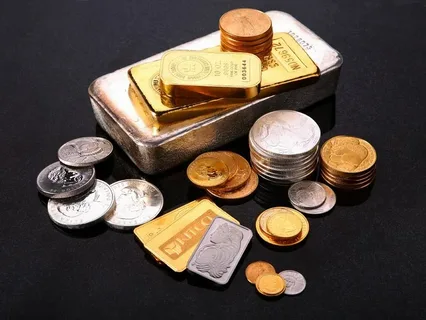
4 minute read
How The Spot Price Affects Your Gold Selling Strategy
If you're considering selling gold, you’ve likely come across the term “spot price.” Understanding the spot price and how to sell gold selling strategy can make a significant difference in the returns you get. In this blog, we’ll explore what the spot price is, how it influences the gold market, and how you can leverage this information to maximise profits.
1. What Is The Spot Price Of Gold?
Gold's spot price is an indication of its current market price at which gold can be bought or sold and delivered to buyers and sellers immediately. It’s a constantly changing figure determined by global supply and demand, influenced by factors like economic data, geopolitical events, and currency fluctuations. Unlike the price you might get at a local jeweler or pawn shop, the spot price is a universal rate applicable across international markets.
Spot prices are quoted per ounce in U.S. dollars, though they can be converted to other currencies. If you’re in India, for instance, the spot price would typically be presented in rupees per gram.
2. How Does The Spot Price Affect Gold Sellers?
The spot price is the baseline reference for gold’s value, affecting how much buyers are willing to pay. While the spot price directly applies to pure gold (24k), items made from lower karat gold or gold mixed with other metals (such as gold jewelry or coins) are valued at a discount based on their purity.
For example:
24k Gold: 100% pure gold is usually valued closer to the spot price.
18k Gold: Contains 75% gold, valued at about 75% of the spot price.
14k Gold: Contains 58.5% gold, valued at around 58.5% of the spot price.
This proportional pricing means that the spot price directly influences what you can expect to receive, with prices rising and falling along with the market. Therefore, a strong understanding of the current spot price can help you choose the best time to sell.
3. How To Check The Spot Price Of Gold
Knowing how to check the spot price is crucial. Reputable financial news sites, gold market analysts, and even some gold dealers provide real-time spot prices on their websites. Since it fluctuates daily, if not hourly, staying updated allows you to spot trends and anticipate whether prices might increase or decrease in the near term.
Websites like Kitco, Bloomberg, and TradingView are reliable sources for tracking the spot price. Most websites allow you to view price changes over time, which can help you identify patterns or times of year when gold prices tend to be higher.
4. Gold Price Trends: When To Sell
Historically, gold prices tend to rise during periods of economic uncertainty as investors turn to gold as a “safe haven” asset. For instance, during financial downturns, geopolitical conflicts, or inflation surges, the spot price of gold often increases. Conversely, when the economy is stable, and markets are performing well, gold prices may fall.
To sell gold at a favorable price, consider the broader economic conditions. Selling during high inflation or financial market volatility could yield better returns. Additionally, monitoring seasonal trends—like the Indian wedding season, when demand typically spikes—can be advantageous.
5. Setting A Gold Selling Strategy Based On The Spot Price
Understanding and leveraging the spot price can form a strategic approach to selling your gold. Here are some steps to guide your strategy:
Monitor the Market: Regularly check the spot price to gain insights into current market conditions. If the price is trending up, you may want to hold onto your gold a bit longer, waiting for an ideal peak.
Timing Your Sale: Selling during price peaks ensures that you’re capitalizing on higher values. If you’re in no hurry, set a target spot price and watch the market until it reaches or surpasses that level.
Choose a Buyer Wisely: Not all buyers offer prices based on the spot rate. Research trustworthy buyers known for offering fair market prices based on spot prices. Reputable gold buyers will clearly explain how the spot price factors into their offer.
6. The Importance Of Selling With Transparency
When selling gold, ensure you’re working with transparent, reputable buyers who follow the spot price as a basis for offers. Unlicensed or less reputable buyers may not disclose how they calculate their rates, potentially offering significantly below market value. Transparent buyers will break down the value they’re offering, showing you how it aligns with the current spot price and the purity of your gold.
In Summary
The spot price of gold plays a crucial role in determining what you can earn from selling gold. By staying informed and choosing a selling strategy based on spot price fluctuations, you can make better decisions and maximize your returns. Whether you're selling gold jewelry, coins, or bars, knowing how to leverage the spot price will ensure you’re well-prepared to sell gold for optimal returns.




